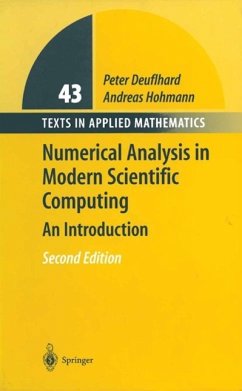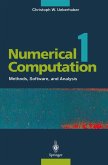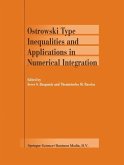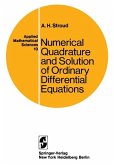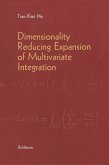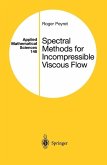This introductory book directs the reader to a selection of useful elementary numerical algorithms on a reasonably sound theoretical basis, built up within the text. The primary aim is to develop algorithmic thinking-emphasizing long-living computational concepts over fast changing software issues. The guiding principle is to explain modern numerical analysis concepts applicable in complex scientific computing at much simpler model problems. For example, the two adaptive techniques in numerical quadrature elaborated here carry the germs for either exploration methods or multigrid methods in differential equations, which are not treated here. The presentation draws on geometrical intuition wherever appropriate, supported by large number of illustrations. Numerous exercises are included for further practice and improved understanding.
This text will appeal to undergraduate and graduate students as well as researchers in mathematics, computer science, science, and engineering.At the same time, it is addressed to practical computational scientists who, via self-study, wish to become acquainted with modern concepts of numerical analysis and scientific computing on an elementary level. The sole prerequisite is undergraduate knowledge in linear algebra and calculus.
This text will appeal to undergraduate and graduate students as well as researchers in mathematics, computer science, science, and engineering.At the same time, it is addressed to practical computational scientists who, via self-study, wish to become acquainted with modern concepts of numerical analysis and scientific computing on an elementary level. The sole prerequisite is undergraduate knowledge in linear algebra and calculus.
Dieser Download kann aus rechtlichen Gründen nur mit Rechnungsadresse in A, B, BG, CY, CZ, D, DK, EW, E, FIN, F, GR, HR, H, IRL, I, LT, L, LR, M, NL, PL, P, R, S, SLO, SK ausgeliefert werden.
Second Edition P. Deuflhard and A. Hohmann Numerical Analysis in Modern Scientific Computing An Introduction "The book is remarkable for its outstanding didactic style and good readability. It has been printed accurately. Exercises, many examples, pictures, and a list of software help the student. The authors have been very careful to demonstrate efficient algorithms and their implementation. This book is strongly recommended as a textbook for lectures about numerics of differential equations! It is an excellent continuation of Numerical Mathematics."-ZENTRALBLATT MATH From the reviews of the second edition: "The title of this textbook characterizes precisely its scope and contents. It can be used as a first course on numerical analysis at an advanced undergraduate or early graduate level. ... The balance between theoretical analysis and basic algorithmic approach is optimal for a broad range of students ... . Practical, enlightening, to the point, and up to date: this is the material I would like to teach to an appropriate group of students and given enough time to cover the whole text." (Adhemar Bultheel, Bulletin of the Belgian Mathematical Society, Vol. 11 (3), 2004) "As indicated by the title, this is not a treatise merely on the numerical analysis of ordinary differential equations (ODEs). Rather, the scope is broader in several aspects. ... The consideration of all the various components which in their totality constitute the full problem makes for a very informative reading which is further aided by the undogmatic style of presentation. The volume can be recommended to newcomers, but also to instructors in this area." (H. Muthsam, Monatshefte für Mathematik, Vol. 143 (3), 2004) "This textbook is addressed to students of science, engineering and computer science ... . The aims of the book are 'to develop algorithmic feeling and thinking' and 'to explain and exemplify essential concepts of modern Numerical Analysis for ordinary and partial differential equations using the simplest possible model problems. As befits a textbook, there are plenty of examples and exercises, and clear descriptions of algorithms. Pleasingly, the various definitions, theorems and lemmas are interspersed by effective exposition." (S.C. Russen, The Mathematical Gazette, Vol. 88 (512), 2004) "This textbook contains nine chapters ... . For many of the topics considered in this book, the authors present pseudo codes, graphical illustrations, exercises and results on the computational complexity of the corresponding algorithms. The considered material is presented in a clear and instructive form and is well suitable as a textbook for courses on numerical analysis." (Robert Plato, Zentralblatt MATH, Vol. 1025, 2003) "The primary aim of this introductory textbook is to develop an algorithmic thinking. This book is mainly addressed to students of mathematics, computer science, science and engineering, at the level of an advanced undergraduate or a beginning graduate course. ... According to me, this textbook is a requirement for every university library, because it is a complete and well-structured work about numerical analysis, with a detailed reference list enclosed. It is also very useful for every scientist ... ." (Pascal Meurs, Physicalia, Vol. 25 (4), 2003)

